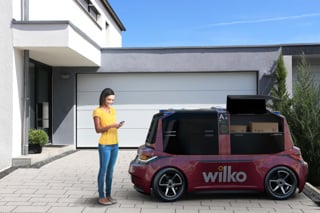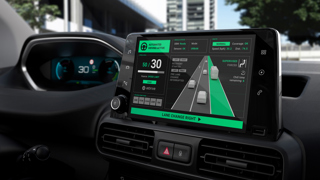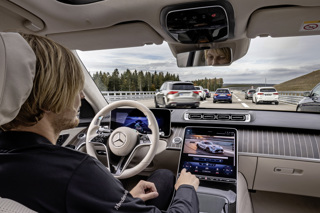Major organisations are warming up to the idea of having autonomous vehicles on UK roads, although they remain sceptical about adding them to their own fleets.
Responding to poll questions asked by Dominik Leeson, deputy head at the Centre for Connected and Autonomous Vehicles, 50% delegates at the November Fleet200 Strategy Meeting said they could see the benefits, including improved safety, greater accessibility and reduced congestion.
However, just 20% expect to introduce them onto their fleets within the next five to 10 years, while almost half (48%) said they were unlikely and one-in-five (20%) very unlikely to adopt driverless vehicles over the next decade.
Unpicking the results during the roundtable session, fleets running toolbox vans where the vehicle is used to transport drivers and their equipment to jobs were least positive about autonomous vehicles (AVs), certainly in terms of bringing them onto their fleets.
These would never be ‘driverless vehicles’ as transporting the driver to the job was the reason for the journey taking place.
Broadly, they saw bigger opportunities with delivery fleets and passenger transport services such as buses, but the most obvious application was for vehicles in controlled environments, such as airports, ports/docks or building sites.
These were the comments and questions raised:
- Our vehicles are a toolbox where the driver is essential.
- The issue in the UK is a lack of road space.
- What happens if the vehicle requires maintenance or has a flat tyre?
- An A to B delivery driver would be fine (or could work for HGVs in between distribution centres), but a lot of journeys are complicated with interaction with the public. Too many journeys have the challenges of ‘what ifs’, such as cones, potholes, temporary stop/go boards, traffic lights out of action, detours. How do autonomous vehicles tackle issues with roads - will they have designated zones?
- Even on buses, what happens if someone has a fall when the bus moves away, or if a disabled person wants access (where the bus would lower)?
- What about bluelight vehicles – e.g. sitting at a red light and an ambulance is behind, will the vehicle move through the red light to allow the ambulance to pass?
- Will Government encounter issues with unions if this results in drivers losing their jobs?
- Will the lack of total 4G and 5G coverage in the UK cause problems?
- Who is pushing this? Answer: technology companies, car manufacturers and road safety campaign groups, plus the Government’s desire for the UK to be a world leader in AV technology.
- The technology could offer improved mobility options for disabled people.
- Struggle to understand how autonomous vehicles will integrate with people driving.
- Will be difficult to get used to the technology and learning will be required that they are positive for drivers.
- Who is held responsible if a vehicle breaks the law or is involved in an road traffic collision (RTC)?
- Positive for removing the human error side of driving, however, who is responsible for upgrading and updating the software of the vehicle? Is it the manufacturer?
- What is the benefit of autonomous vehicles?
-
Does autonomous mean electric vehicle (EV) or can it be fuelled by petrol or diesel?
In response, Dominik Leeson said these were among the many questions being considered by the experts with CCAV. He added that current thinking was if a vehicle encountered an unknown situation or problem, it would cease to operate until a driver – either in-vehicle or remotely – could take control. 
- Computer systems in the vehicles would be connected and talk to each other, relaying any issues with the road ahead, including potholes or congestion.
- Vehicles would operate to safety principles – if they don’t know what to do, they will stop. This could cause traffic jams, so the technicians are working on a solution for that as well.
- Legislation will set out all liability cases at a national level and the Government would then work with local authorities to establish their appetite for introducing trials. It would also cover all levels of autonomy – any point at which you can switch on an autonomous system.
- Insurers have been consulted and are supportive of the technology.
- Use cases would prioritise controlled environments where there are fewer variables, and then motorways before looking at more complex road systems such as towns and cities.
- The biggest hurdle was peoples’ natural scepticism, followed by the need to bring in legislation quickly enough to keep pace with the technology.
- In public responses, the most positive reactions came from the youngest and oldest age groups.
Leeson also downplayed the likelihood of the Government making AVs mandatory, suggesting there would be a gradual migration, potentially over a 50-60-year timescale, rather than enforcement.
























Login to comment
Comments
No comments have been made yet.